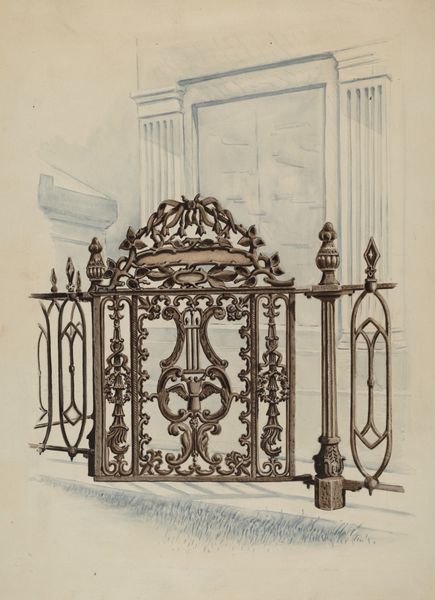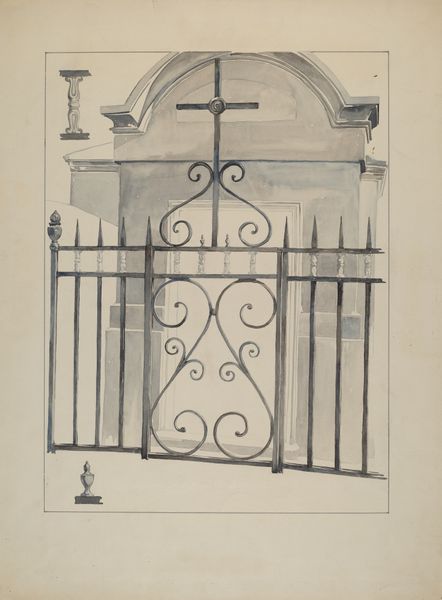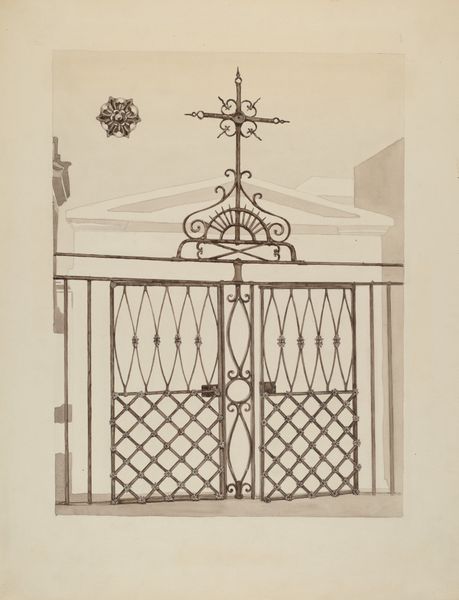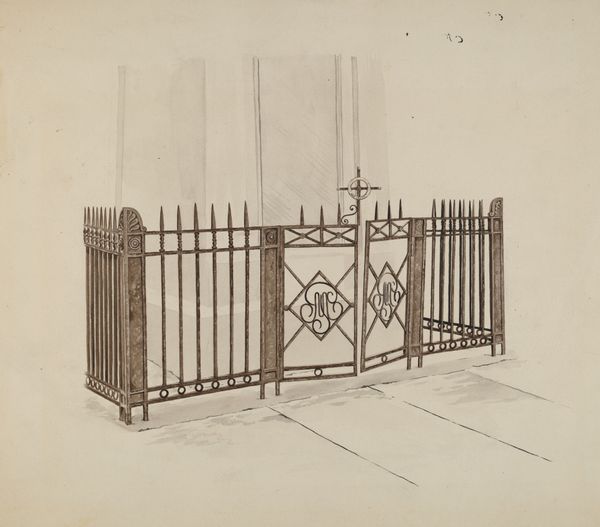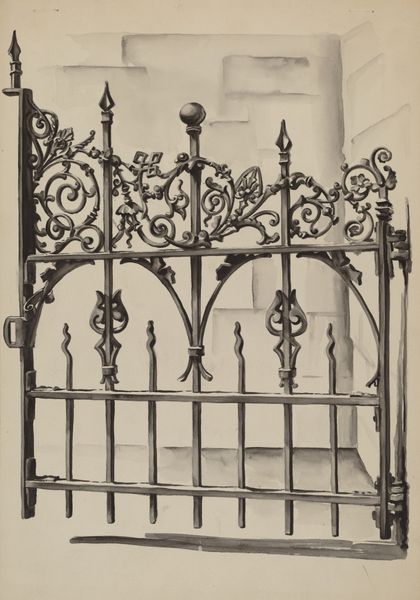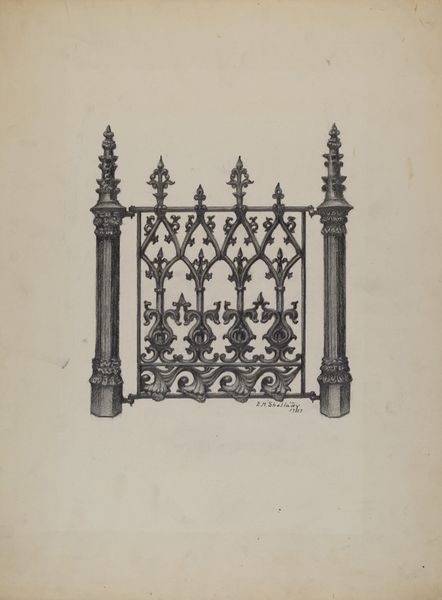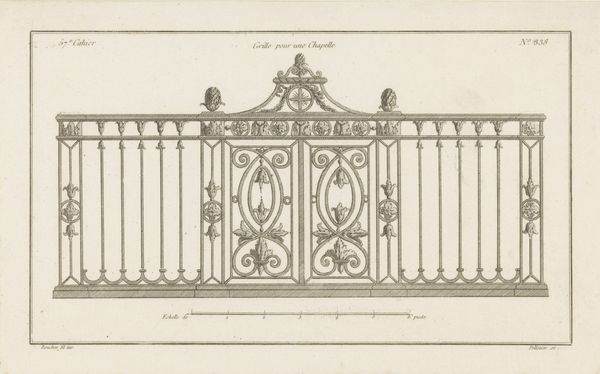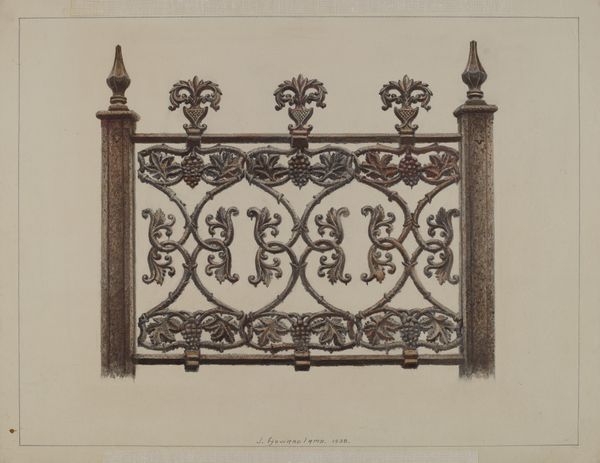
drawing, watercolor
#
drawing
#
watercolor
#
geometric
#
cityscape
#
watercolour illustration
#
watercolor
#
realism
Dimensions: overall: 50.5 x 39.3 cm (19 7/8 x 15 1/2 in.)
Copyright: National Gallery of Art: CC0 1.0
Curator: Let’s discuss Al Curry’s “Iron Gate and Fence,” a watercolor and ink drawing, likely created around 1936. The structure’s symmetrical, detailed design catches the eye. Editor: My first impression is one of enclosure and maybe a bit of somber reflection, don’t you think? The palette is so muted and the gate looks like it barricades entry. Curator: Precisely, the palette contributes greatly. Note how the sepia tones render depth and form, especially in contrast with the flat planes of the wall in the background, reinforcing its architectural presence. Editor: I wonder about the choice of the iron gate as a subject. During the Depression era, the symbolism of exclusion could be interpreted as a commentary on social barriers and economic disparity. Was the promise of the American Dream actually for everyone? Curator: Context is key but it is worth unpacking how each geometric unit comes together. Take the curves, how they intersect in this beautiful cruciform pattern that animates an otherwise hard structure. Note how it softens the hard edges. Editor: Yet even within the delicate filigree and decorative finials there’s an undeniable barrier, an almost oppressive silence—perhaps a critique of the institutional or religious structures represented by the crosses that dominate the visual field. Curator: To reduce this image solely to a metaphor about external barriers seems a bit limiting. I am struck by the artist’s keen understanding of iron work. The meticulous rendering elevates the object to something worthy of careful looking. The linear simplicity underscores the geometry. Editor: Still, I am drawn to how these historical markers also function as powerful metaphors for contemporary forms of confinement. The gate isn't just an object. Its resonance stems from lived experience. It reflects and interrogates structures of power. Curator: Perhaps the true achievement here lies in its capacity to elicit multiple interpretations. Its visual and conceptual components make for a rich tapestry, don’t you think? Editor: Definitely a testament to the way material objects and social contexts interweave. Food for thought.
Comments
No comments
Be the first to comment and join the conversation on the ultimate creative platform.
